Estimated reading time: 12 minutes.
February/2017 - The EF 24-105mm f/4 L IS II USM is the unexpected second generation of the f/4 standard-zoom from Canon’s professional L series. “Unexpected” because it updates a not-so-old lens, the identical 24-105mm L, dated from just 2005; a bit too soon for a photography equipment, and ahead of more important lenses in need of an update (28-300mm, 50mm f/1.2, 24mm f/1.4…). Unexpected because the new model arrives for US$1099 the lens only; a high price for the “L f/4” lineup, that Canon promised to be a low cost alternative to its top f/2.8s (16-35mm, 24-70mm, 70-200mm). And unexpected because it doesn’t do much more than the older lens: with updated ergonomics, fast auto focus, the latest generation stabilizer and revamped optical formula, is the 24-105mm L II the only lens you’ll ever need on your full frame kit? Let’s find out! Nice reading.
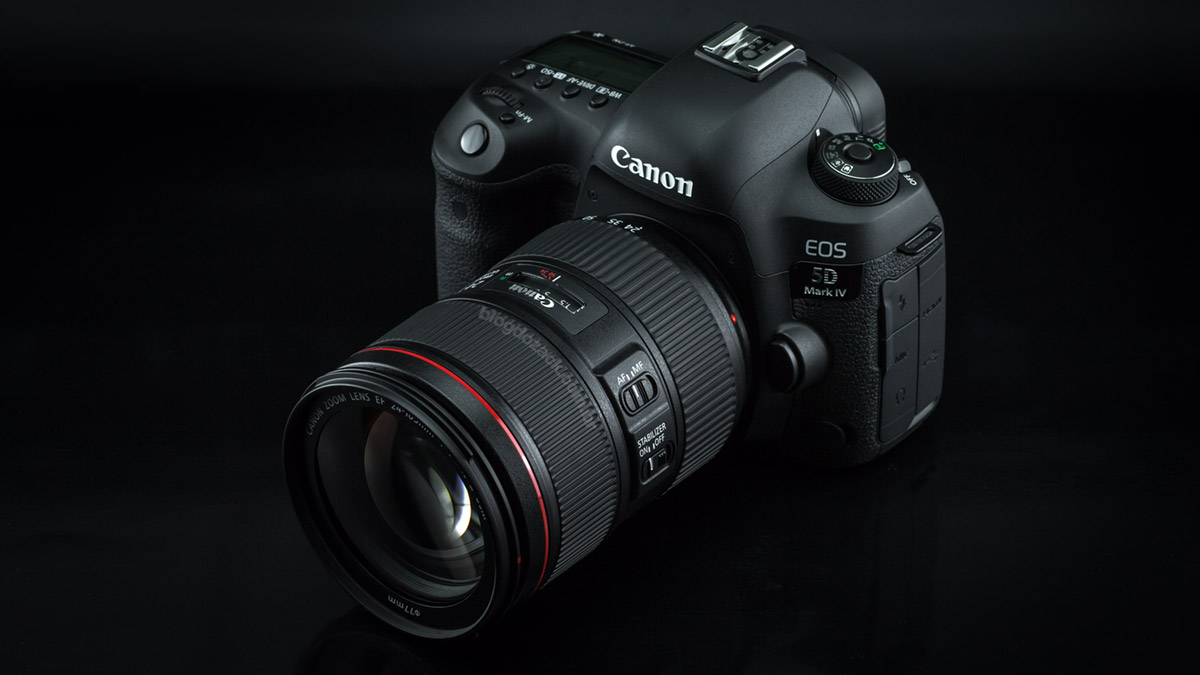
At 8.3 x 11.8cm of 795gr of mostly plastics on the outside and maybe metals (given the fluid zoom operation) on the inside, the first thing we notice on the 24-105mm f/4 L II IS USM is how it grew compared to the previous generation (8.3 x 10.6cm of 670gr). Not just an aesthetic update with Canon’s new type family and the external non-scratching plastic, the growth is justified on the all-new internal mechanics, that require larger barrels to support bigger bearings; and the promised reduced vignetting, asking for larger glasses. The design follows its form, big and a pleasure to hold, with the same “beer can” feeling I got from the EF 35mm f/1.4L II USM: a single width tube from bottom to top, with no different tactile areas, to “disappear” in your hands.
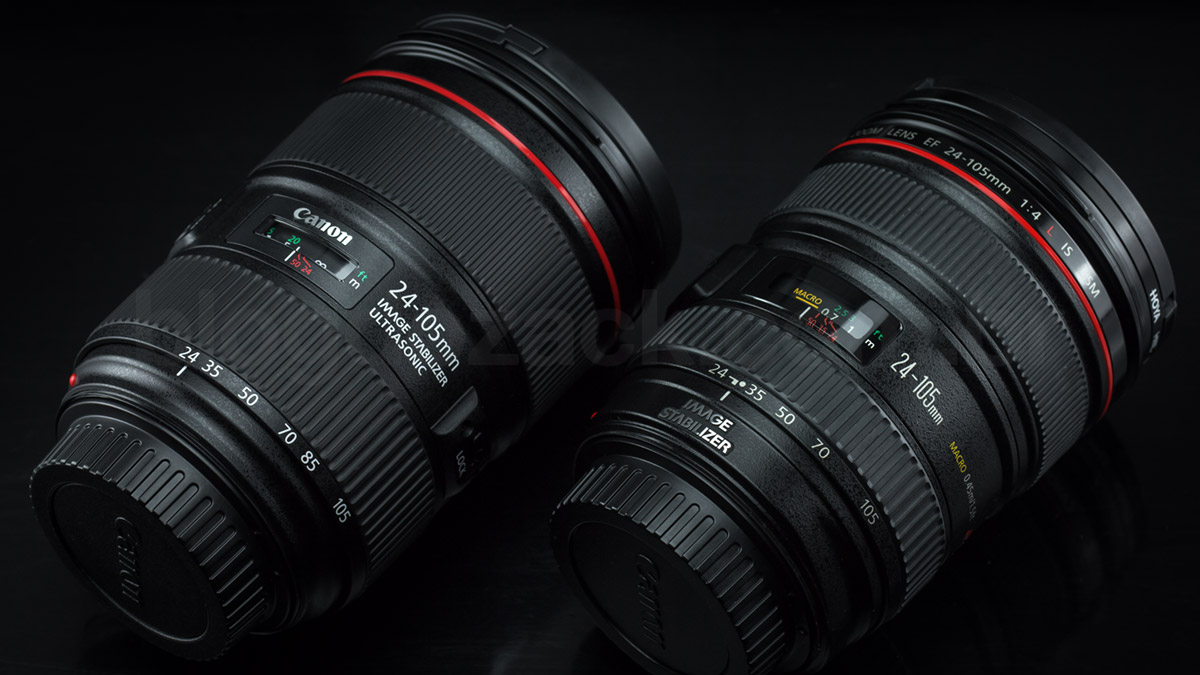
In your hands the ergonomics are vastly superior to the older version, that used to receive criticism for its uncomfortable experience. While both lenses share the same ring orientation, with a rear zoom ring and a frontal focusing ring, on the new lens they’re both 50% longer, at 3cm versus the prior 2cm; a significant leap on the finger’s grip. A characteristic (or defect?) of the classic version was the “heavy” zoom ring, noticed mostly sided by the classic 24-70mm f/2.8 (not Mark II), that was all-metal and felt lighter to operate, despite the heavier glass elements. That was fixed on the 24-105mm L II, that’s probably using the same nylon bearings “invented” on the 2010 70-200mm f/2.8 L IS II USM, made for heavier zooms. It all grew and matured on the L zoom lineup, with features from the top of the line f/2.8’s, now seen on the basic f/4’s, for a lower price.

The fluid zoom motion is practically linear from 24mm to 105mm. With an external single cam design, the lens “opens” from wide to telephoto, with no variance in torque or speed at any focal length; these squeezed at only 70º. An identical turning angle to the 24-70mm’s (f/2.8L II and f/4 “macro”), it’s meant for a speedier usage, greater around the streets. But it’s unsuitable for zoom pull effects during video recording, once these distance are too close to each another (24mm and 35mm have 3º between them). So it’s difficult to recommend it for smooth framing transitions during dynamic videos, as Canon proposes on the APS-C EF-S 18-135mm f/3.5-5.6 IS USM; even offering a SERVO motor as an accessory! So apparently the 24-105mm II is made for photography, better to stay all-day in your hands, than an update thought for video, given its ergonomics.

The front focusing ring received even less updating. While the rubberized area grew to fit the whole ring, just as the zoom, and both feature different groove widths to be operated out of sight, mechanically the focus movement is the same: smooth and light, something only the L series can guarantee. The 110º turning motion is about the same as the older lens, from infinity to minimum at 0.45cm, but completely quiet on the newer version. The older sounded like we’re scratching two pieces of cardboard together, noise that could be captured during video recordings, but now it’s 100% silent, and with the same precision (no wobbling) we’re used to at Canon, and sporting full time manual operation: even with the AF mode switch at auto (AF), the focusing ring can be used to further adjust the motor position. The distance window got the current generation’s aesthetics, but IMHO it’s harder to read: the numbers feel too recessed, deep inside the barrel, and we must “raise” to the camera in order to see them; the older lens “fat” plastic cover gave some “magnifying” to the letters, making it possible to see the numbers from any angle.
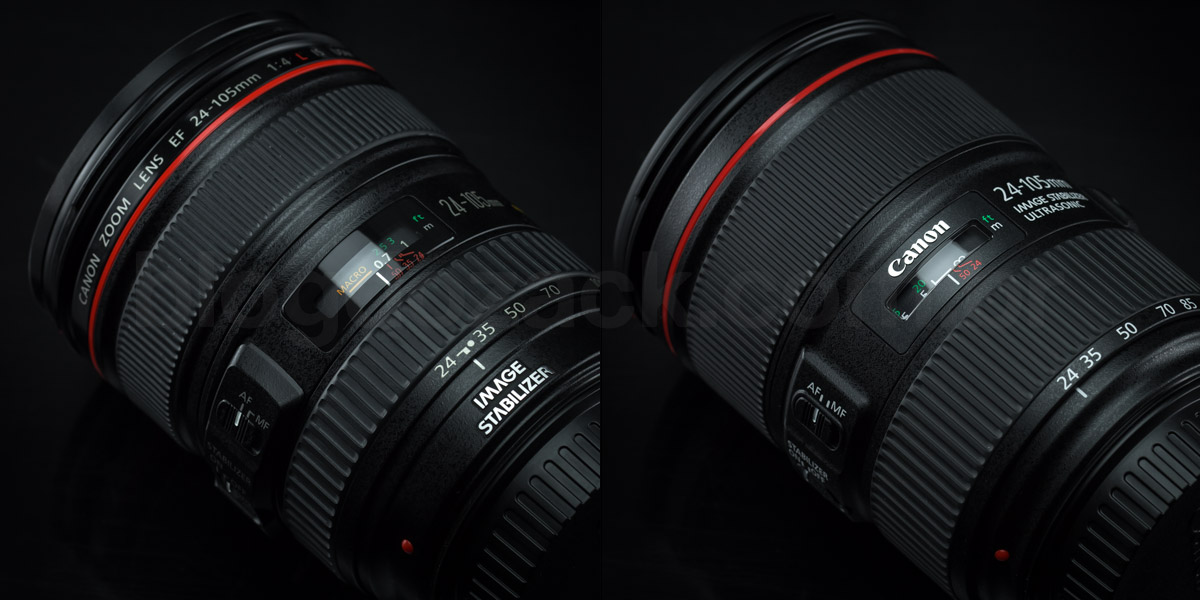
Inside the AF and stabilizer motors naturally got updated, but are even more questionable given the short life cycle of the 24-105mm L. The classic lens was already great: instant focusing from a ring-type USM, silent and precise, no matter the camera nor the light situation. For video, both are smooth as butter using Canon’s EOS Movie SERVO AF (focus racking) on Dual Pixel cameras: with no wiggling, no noise, no errors; just PERFECT. So in that matter, nothing’s changed. But the IS “image stabilizer”, got a new rating up to 4EV, slightly better than the 2005 3EV. When shooting under low light it helps stabilizing the lens, dismissing the tripod for most photos; just take a deep breath and the lens “holds” the exposure at 0.5s in 24mm; amazing. And for videos its mandatory for those shooting run and gun style: again without the need of a tripod, handheld, not wasting any time. It’s the biggest advantage over the 24-70mm f/2.8L II USM that doesn’t feature an IS.
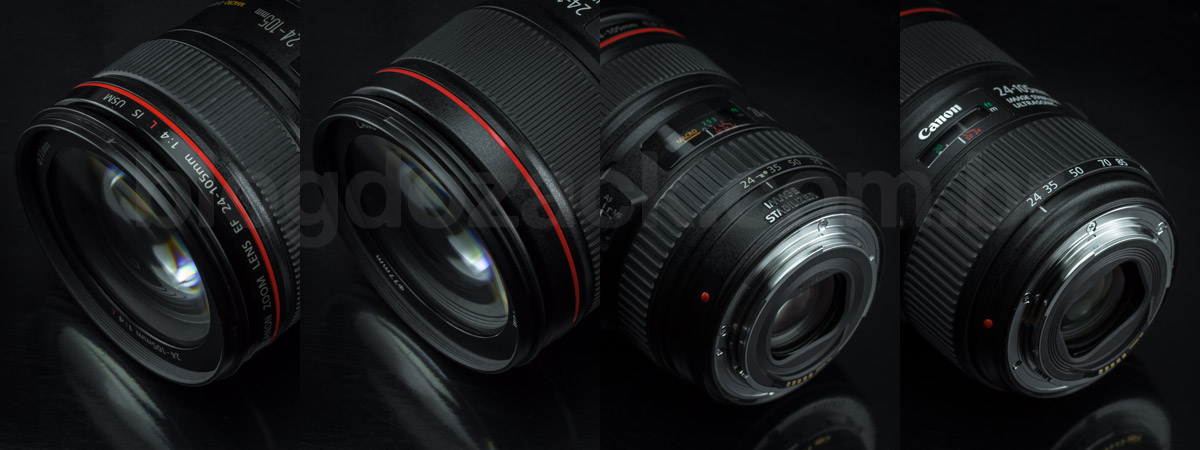
Finally at the front the 24-105mm L II IS USM accepts the same ø77mm filters from the older lens, great to update without breaking the bank. The first and last glass elements are fluorine coated, that repeals water and grease, making it easier to clean; the previous lens had nothing like it. The included-in-the-box lens hood firmly locks in place with a button, complimenting the rear built-in plastic hood inside the metal mount; both avoid flaring. The weather sealing remains largely the same with rings, buttons and mount protected with rubber gaskets; but Canon recommends protecting the lens against excessive water and dust. Mechanically the 24-105mm L II is an updated lens on the L series, with the same robust built from all lenses. But it’s not a mandatory update to the older version, despite being welcomed on the current and future EOS lineup.

“Incense” at f/4 1/60 ISO800 @ 76mm; all photos with the EOS 5D Mark IV; Dual Pixel raw files available at Patreon.
With 17 elements in 12 groups, four (!) glass-molded aspherical and Canon’s new Air Sphere Coating (ASC), the EF 24-105mm f/4L IS II USM is largely the same as the 2005’s 24-105mm, that lost one of its 18 elements in 13 groups (most of them UD). Canon’s promise with the new lens is clear (no pun-intended): to enhance corner luminosity, reducing vignetting; and extra contrast. So no words on better sharpness and resolution that, frankly, were already acceptable. In practice the 24-105mm II center frame looks virtually similar to 24mm primes, dropping resolution just around the corner. From 35-85mm, it’s free from lateral chromatic aberrations, geometric distortion and astigmatism; suffering from some axial CA on out-of-focus highlights. And at 105mm, the overall frame resolution got slightly raised, noticed mostly wide open. Both 24-105mm are easy to shoot without any major optical shortcomings, no matter the aperture, focal length and light situation.
The fair resolution at any zoom position and as soon as wide open has always been the highlight of the 24-105mm f/4. Be it the classic version, that beat the also classic 24-70mm f/2.8, or the newer version II with Air Sphere and less glasses, the easiness of a modern, practical and high resolution formula is still the best part of this model. It can easily be offered as a kit for those questioning what lens to buy, in order to showcase Canon’s new sensor capabilities. Although the spec does gather a legion of haters, I just have never clicked a “bad picture” with it: just mount it on the camera, go for a hike, and come back with files that justify the investment on the larger format (full frame), and the effort to be with it (large cameras and lenses). Be it from wide angle to telephoto, and wide open, the 24-105mm f/4L II works; mount it up and go shooting with your full frame.
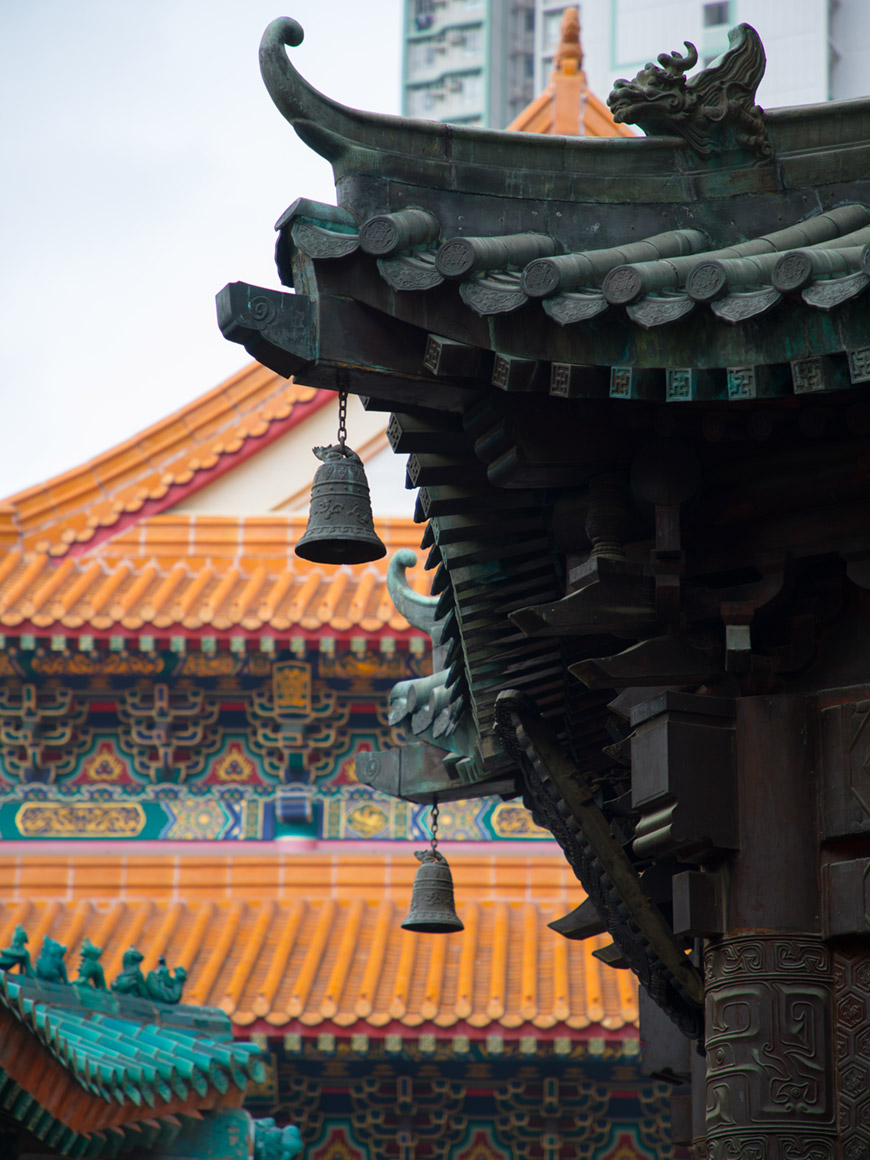
“Sino” at f/4 1/200 ISO100 @ 105mm.
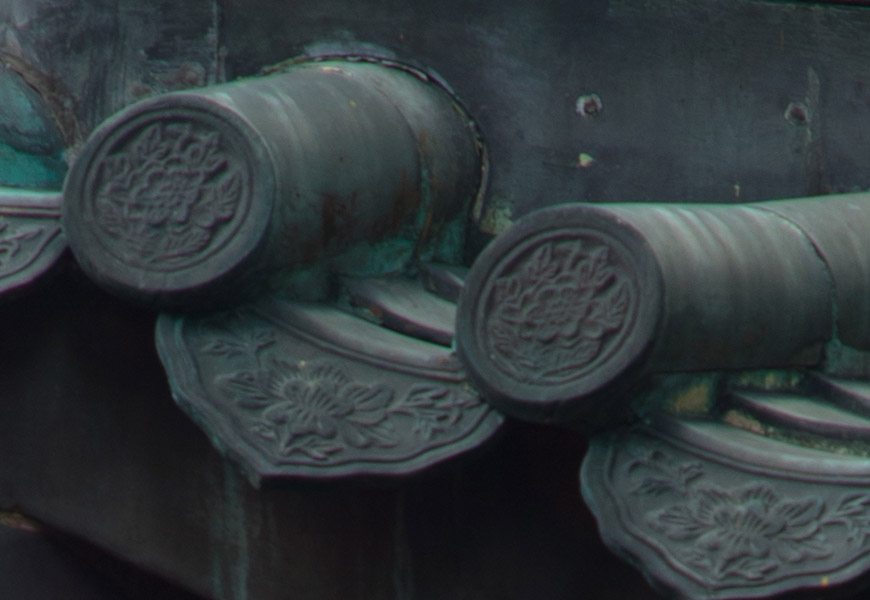
100% crop, slight smoothness, probably from the very short depth of field.

“Lantern” at f/4 1/50 ISO2000 @ 41mm.

100% crop, wide open detailing, perfectly rendered textures.

100% crop, sharp incense sticks against the blurred background, from the shallow depth of field.

100% crop, perfect textures from the wide open zoom.
Stopping down slightly enhances the frame resolution, that looks sharp at f/8. On this setting, only the center of the glasses is used, excluding any misalignments on the optical path, for greater resolution coming from a zoom. It’s impressive how f/8 files rival those shot with a prime, filled with details from edge to edge of the frame, 1) fun for pixel peeping at 100% zoom on the computer’s screen or 2) ready for large format printing of any sorts of jobs. Graphics on urban scenes are perfectly rendered on wide 24mm photos. Minimal every day textures are recored at 35mm. And from standard to telephoto, files show even more resolution in this generation, with fine lines on clothes and trees on distant landscapes. If the job asks for high resolution and detail rendering, just stop to f/8 and variably adjust the focal length on your 24-105mm L II.
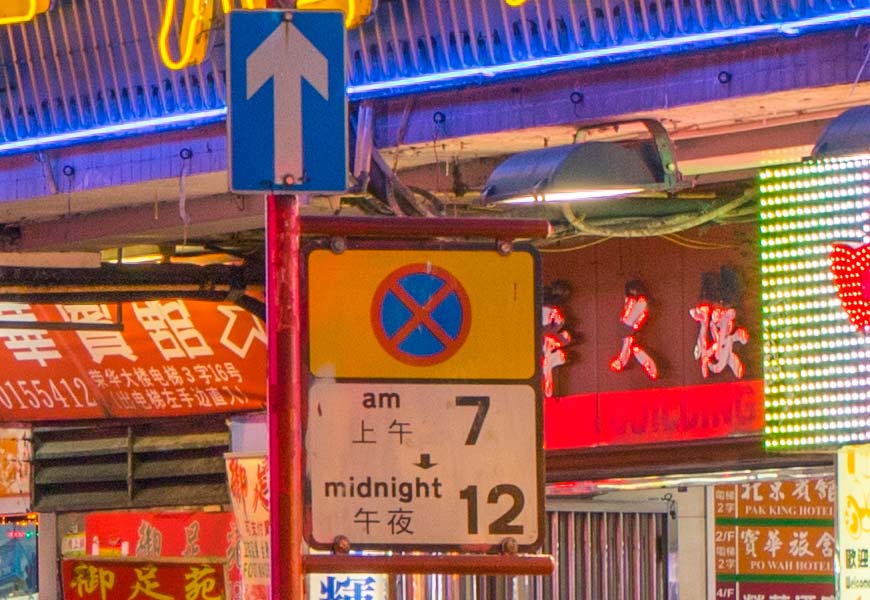
100% crop, files filled with details when we stop down the lens.
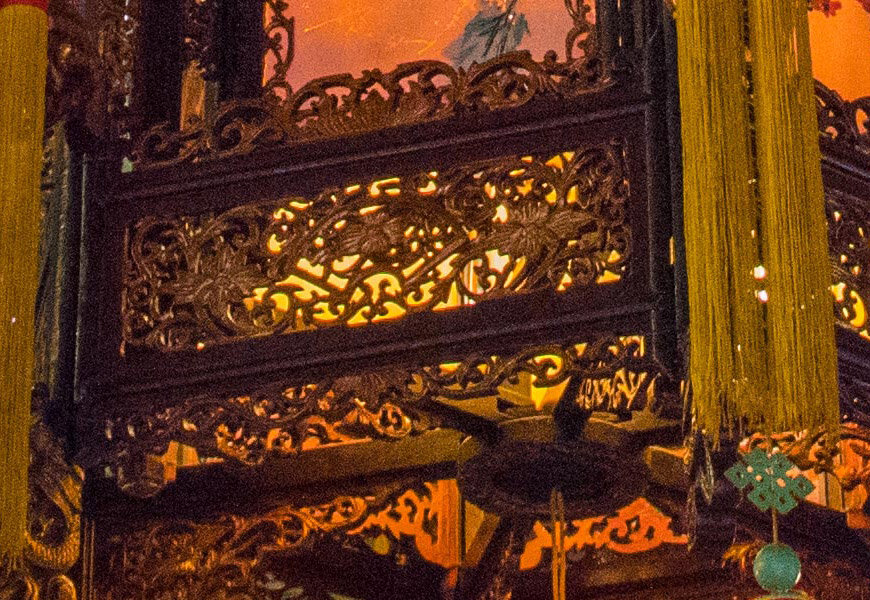
100% crop, plenty of details on the optimized aperture and Canon’s 5D Mark IV ISO4000.

100% crop, how to deal with so many details at night, around the streets, handheld?

100% crop, tiny sun stars and perfect graphics at 1/10, hand held.
Still talking about resolution, a highlight from these zooms is their ability to keep details even at close focus. While on the previous 24-105mm Canon called the 0.70cm or shorter distances “macro”, and it even released a specialty 24-70mm f/4L IS USM with macro built-in, on the second 24-105mm it left the specification intact at 0.23x maximum magnification (1:4.3), nice to blur the background when shooting up close. On such an extreme position (105mm at the minimum focusing distance), the 24-105mm suffers to focus the light on the same plane, with a slight drop in the center contrast – easily fixed via software – and lateral chromatic aberration around the edges, with colored halos surrounding contrast edges. It’s reasonably hard to happen (105mm + MFD + subject on the frame’s edge) and expected, once it will only happen on a short depth of field capture. But it showcases the limits of a f/4 zoom, that just can’t compete with similar primes.

“Cat” at f/4 1/125 ISO1250 @ 105mm.

100% crop, practical perfection wide open and shooting up-close.

“Cat II” at f/4 1/125 ISO800 @ 105mm.

100% crop, slight smoothness at the shortest focusing distance, the limit of the zoom project.

“Flowers” at f/4 1/10 ISO250 @ 105mm.

100% crop, the detailing on the shortest focusing distance is not this zoom strong point; for that, consider a dedicated macro.
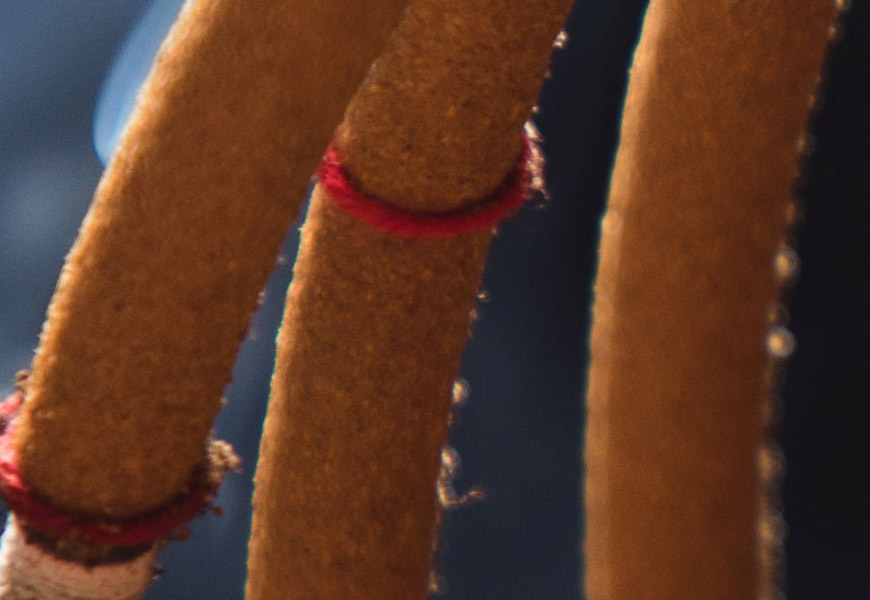
100% crop, although the performance is not brutal, it’s more than enough for everyday details.
Chromatic aberrations appear mostly on the range limits, with colored lines on contrast edges from wide angle and telephoto shots. Easily spotted even on wide angle primes (24-35mm), the lateral aberrations appear on architectural lines of buildings and trees against the bright sky, both asking for software compensations prior to publishing; a task as hard as a single click on Photoshop, or using the camera’s built-in lens profile. From standard to telephoto, aberrations appear only when the light source is included in the frame, with strong purple lines around contrast edges (secondary CA). It’s a phenomena that Canon started to tackle optically on the Blue Refractive Optics 35mm f/1.4L II USM, as it is thought for the highest quality possible, but not used on the new zoom, that must be fixed in post. It’s expected from a project thought more for its flexibility.
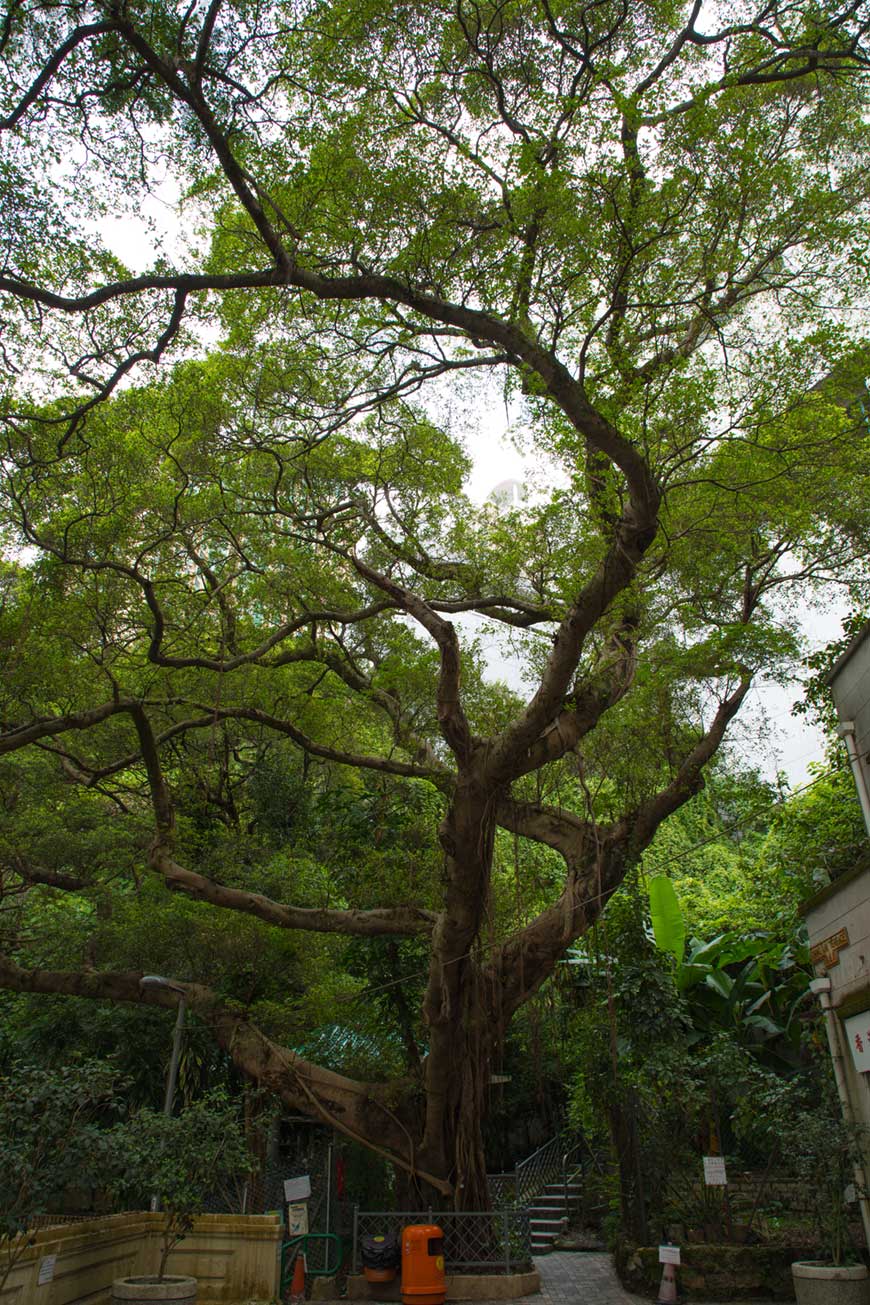
“Árvore” at f/8 1/25 ISO100 @ 24mm.
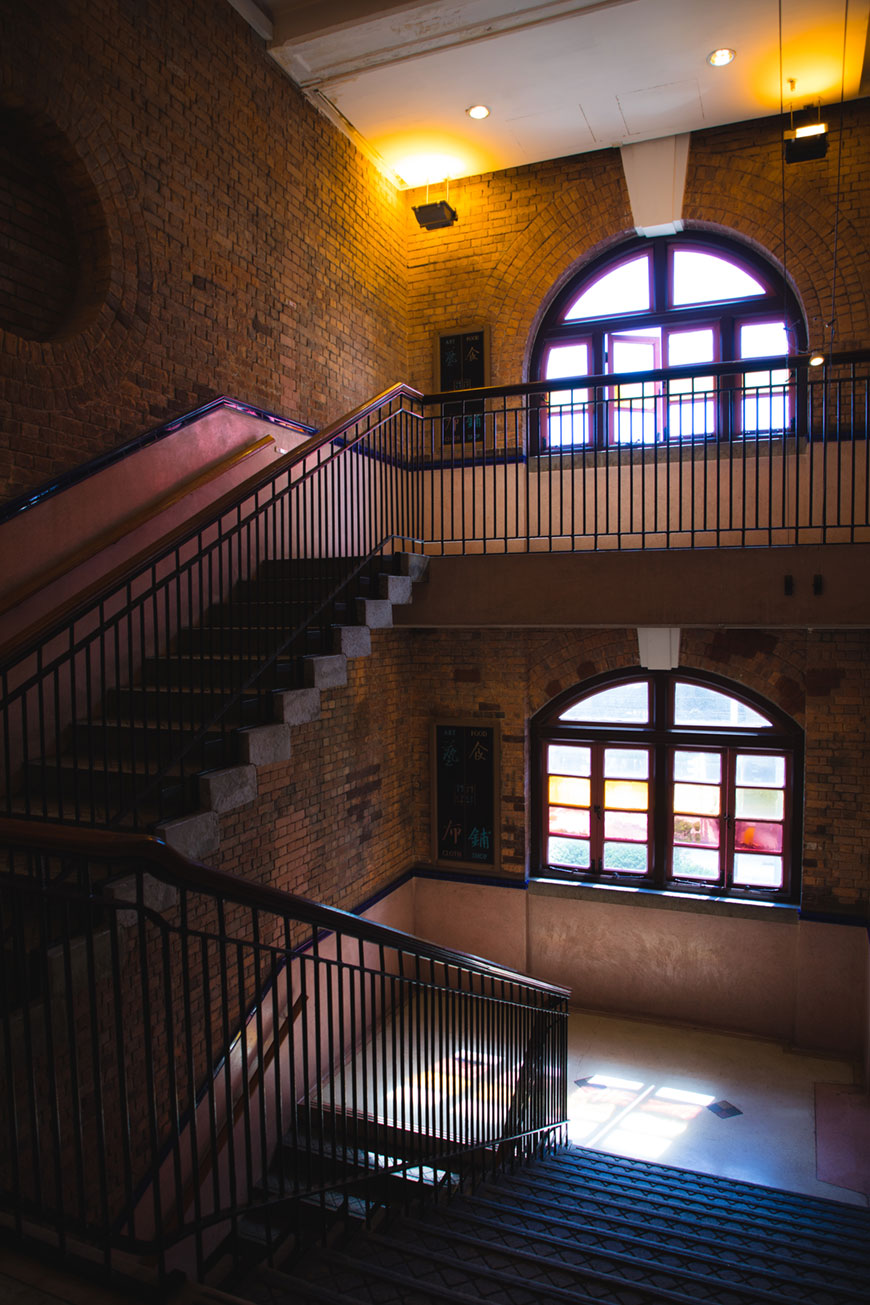
“Windows” at f/4 1/30 ISO200 @ 24mm.
”Lock” at f/4 1/40 ISO2000 @ 24mm; antes e depois da correção eletrônica de distorção geométrica. ”Ceiling” at f/8 1/320 ISO320 @ 24mm. ”Hong Kong” at f/4 1/20 ISO1600 @ 64mm. ”Diiner time” at f/8 1/60 ISO3200 @ 70mm; short telephoto with a slight pincushion.Geometrical distortions are still very visible on the 24-105mm zoom, seen as an giant bubble on the wide angle (24mm); unacceptable for precision work (like architecture), when we can’t “afford” the electronic compensation. As the software dismisses a large portion of pixels from the frame edges, it’s the biggest reason to invest on a prime. For everyday photos, it’s “kind of” acceptable for those exploring dramatic compositions with the frame lines; nice for dynamic portraits. But for serious work, it’s better to consider the fantastic Sigma 24mm f/1.4 DG HSM, or the top-of-the-line Canon TS-E 24mm f/3.5L II. From normality to telephoto (35-105mm), the opposite happens: the pincushion drops the straight lines to the frame center, noticeable on landscapes and buildings. But as the software compensation is positive, not erasing any pixels, I can live with the zoom.
Finally the colors and bokeh are typically “zoom L”, neutral for when you don’t need them; but pretty when they take over the image. The strong tones are Canon’s signature on all lenses that, together with EOS cameras and its color science, deliver the market’s deepest reds, sided by absolute greens and blues; fantastic! It’s easy to see how colorful the review album looks from a L series, just like the T6i, 7DII, 80D, 5DS and 5D Mark IV cameras; whereas I must “boost” the files on other brands (especially Sony). The background blur also pleases those looking to explore the “full frame look”, when purchased as a kit, with proper circular highlights (the new 10 blade aperture is a departure from the previous 8), for a diffuse, smooth, colorful and high contrast bokeh. It’s a very neutral behavior at the same time it’s impactful, be it for web publishing or prints.
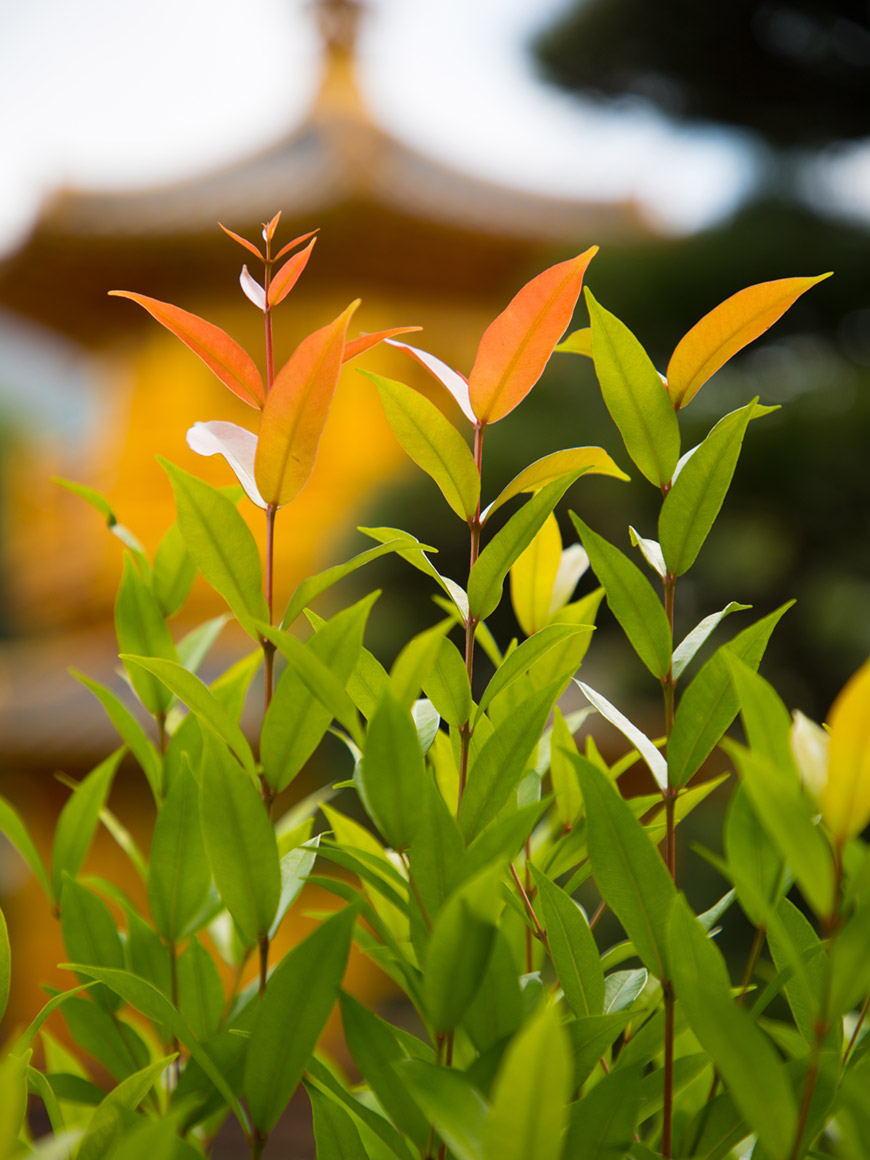
“Leaf” at f/4 1/500 ISO100 @ 800mm; smooth contrast, strong colors.

100% crop, impeccable details, even wide open.

“Incense IV” at f/8 1/100 ISO1250 @ 105mm; the circular highlight from a 10 blades aperture, at f/8.
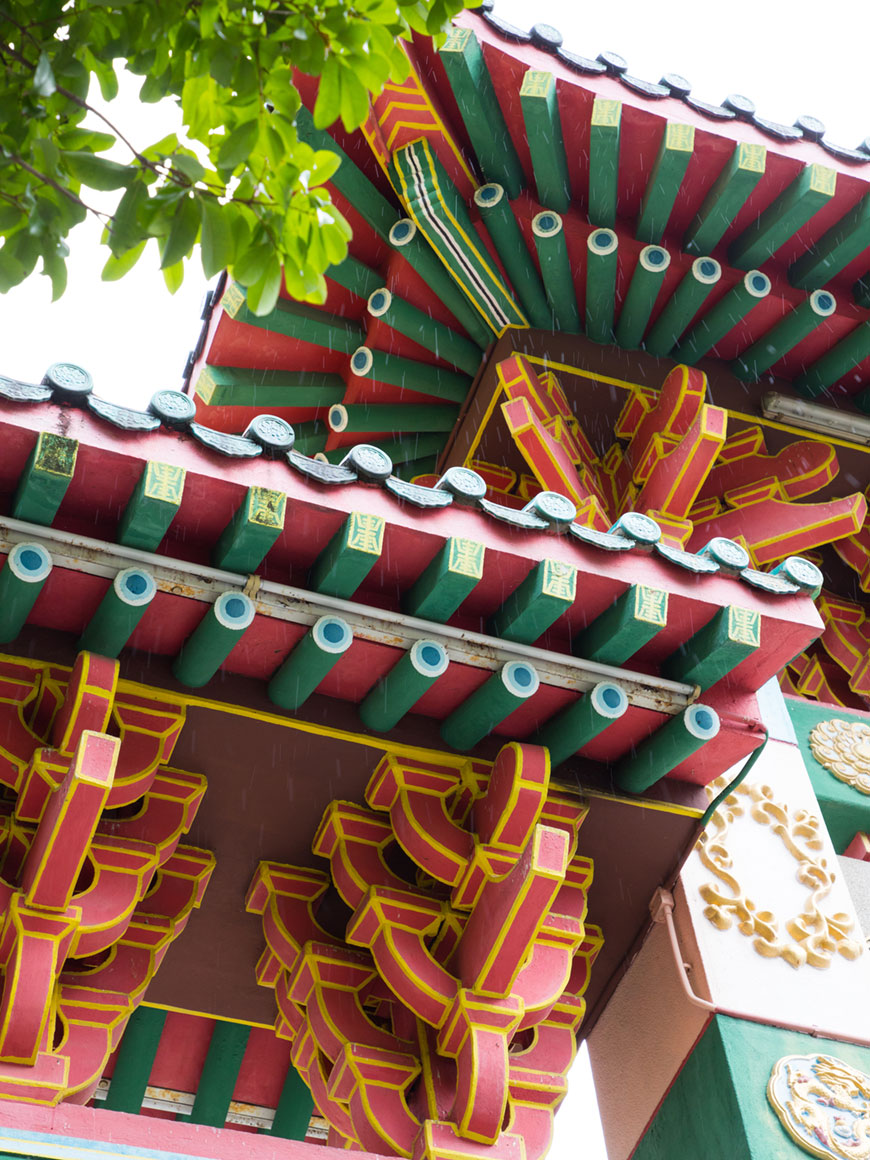
“Roof II” at f/8 1/60 ISO640 @ 62mm.

“Taxi” at f/8 1/100 ISO800 @ 85mm.
The EF 24-105mm f/4L II USM is a unexpected lens because it does nothing we weren’t already getting from Canon: a mechanically robust zoom to work all day, that deliver without much effort. It’s marries well with the brand’s tendency to enhance the ergonomics (better in hands, despite being larger and heavier) and technicalities (the latest IS), for easiness of use dismissing dramatic changes (like those jumping from a DSLR to a mirrorless). It’s more of the same and slightly better, that will please those used with the brand; or prepare the next generation of photographers arriving at the L series. But it’s not worth as an upgrade for those using the previous model, that was already modern. If you’re new to the L series, opt for the new model and nice shooting!